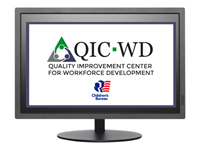Child Welfare Quality Improvement Center for Workforce Development (QIC-WD)
Date of this Version
9-2011
Document Type
Article
Abstract
Child welfare staff are first responders; just like police officer and fire fighters, they are asked to respond to emergency situations with very little information, and by doing so often put themselves at risk. In addition to the very real physical risks involved with responding to a report of suspected child abuse or neglect, there are equally real psychological risks involved with taking care of children and families that have experienced abuse, neglect, family and community violence, and other traumas. Unlike police officers and fire fighters, however, child welfare staff get very little public recognition for the hard work they do. When the child welfare system is in the news, it is often for negative reasons, which serves to increase rather than mitigate the stress and pressure its staff are working under. Secondary traumatic stress (STS) refers to the experience of people — usually professionals — who are exposed to others’ traumatic stories as part of their jobs and as a result can develop their own traumatic symptoms and reactions. Child welfare staff are particularly vulnerable to STS because of the vulnerable nature of their clients, the unpredictable nature of their jobs, and their relative lack of physical and psychological protection. The Resilience Alliance is a project undertaken by the Administration for Children’s Services-New York University Children’s Trauma Institute (ACS-NYU CTI) to mitigate the impact of STS among child protective staff in New York City, and thereby increase staff resilience, optimism, self-care, social support and job satisfaction, and decrease stress reactivity, burnout and attrition. While we have conducted this intervention with child protective staff, we feel that it is relevant to child welfare staff generally. We call this project the Resilience Alliance because its goal is to work together with child welfare staff to build their ability to protect themselves and their co-workers. This is not a one-directional training provided to staff, but rather an intervention that is done in partnership with child welfare staff at all levels, from the front line to the senior leadership of the agency. 6 T he R e s ilience Alli a nce This intervention is active — while we hope you will learn some new concepts, most of the time will be spent learning and practicing skills that, in turn, will help you better manage the stress of child welfare work. The handouts and exercises in this Participant Handbook will be used throughout the course of this intervention. Before formally beginning the Resilience Alliance intervention, you will meet with your colleagues to learn about the intervention and receive a high-level review of some of the intervention’s main themes. If you have any questions about the intervention’s content or delivery, they can be addressed during these meetings. As noted above, this intervention will involve all levels of staff in your agency/area — caseworkers, supervisors and directors. The intervention is structured this way because all levels of staff are impacted by secondary traumatic stress, and all need to learn the same resilience skills. Having everyone’s participation will also help to address the impact STS can have on the workplace climate and functioning, which has a large influence on how well people are able to do the hard work of child welfare. However, there will be times when you are meeting only with your peers (e.g., caseworkers with other caseworkers), which will provide an additional chance to support and learn from each other. Thank you for taking the time to participate in this important effort. Child welfare work is critically important, but often goes unrecognized. This time is for you, and we hope it provides you with tools and skills to manage the challenges of your job.
Included in
Industrial and Organizational Psychology Commons, Performance Management Commons, Public Policy Commons, Social Welfare Commons, Social Work Commons, Training and Development Commons


